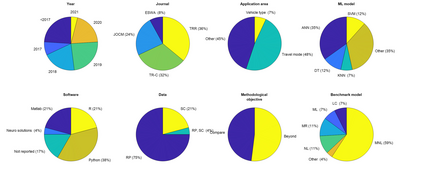Since its inception, the choice modelling field has been dominated by theory-driven models. The recent emergence and growing popularity of machine learning models offer an alternative data-driven approach. Machine learning models, techniques and practices could help overcome problems and limitations of the current theory-driven modelling paradigm, e.g. relating to the ad-hocness in search for the optimal model specification, and theory-driven choice model's inability to work with text and image data. However, despite the potential value of machine learning to improve choice modelling practices, the choice modelling field has been somewhat hesitant to embrace machine learning. The aim of this paper is to facilitate (further) integration of machine learning in the choice modelling field. To achieve this objective, we make the case that (further) integration of machine learning in the choice modelling field is beneficial for the choice modelling field, and, we shed light on where the benefits of further integration can be found. Specifically, we take the following approach. First, we clarify the similarities and differences between the two modelling paradigms. Second, we provide a literature overview on the use of machine learning for choice modelling. Third, we reinforce the strengths of the current theory-driven modelling paradigm and compare this with the machine learning modelling paradigm, Fourth, we identify opportunities for embracing machine learning for choice modelling, while recognising the strengths of the current theory-driven paradigm. Finally, we put forward a vision on the future relationship between the theory-driven choice models and machine learning.
翻译:自建立以来,选择建模领域一直以理论驱动的模式为主。最近机器学习模式的出现和日益流行,提供了一种替代数据驱动的方法。机器学习模式、技术和做法可有助于克服当前理论驱动的建模模式存在的问题和局限性,例如,在寻找最佳模型规格方面特别集中,理论驱动的选择模式无法利用文本和图像数据。然而,尽管机器学习对于改进选择建模做法具有潜在价值,但选择建模领域对接受机器学习有些犹豫不决。本文件的目的是促进(进一步)将机器学习纳入选择建模领域。为实现这一目标,我们证明(进一步)在选择建模领域将机器学习纳入选择建模领域有利于选择领域,以及我们从哪些方面可以找到进一步整合的模型规格和进一步整合的好处。具体地说,我们采取以下做法:首先,我们澄清两种建模模式之间的相似性和差异。第二,我们提供了使用机器学习模型模型的文献概览。第三,我们加强当前理论驱动型建模领域机器学习的优势,同时将目前机动型模型与我们学习的机进型模型相比较。










